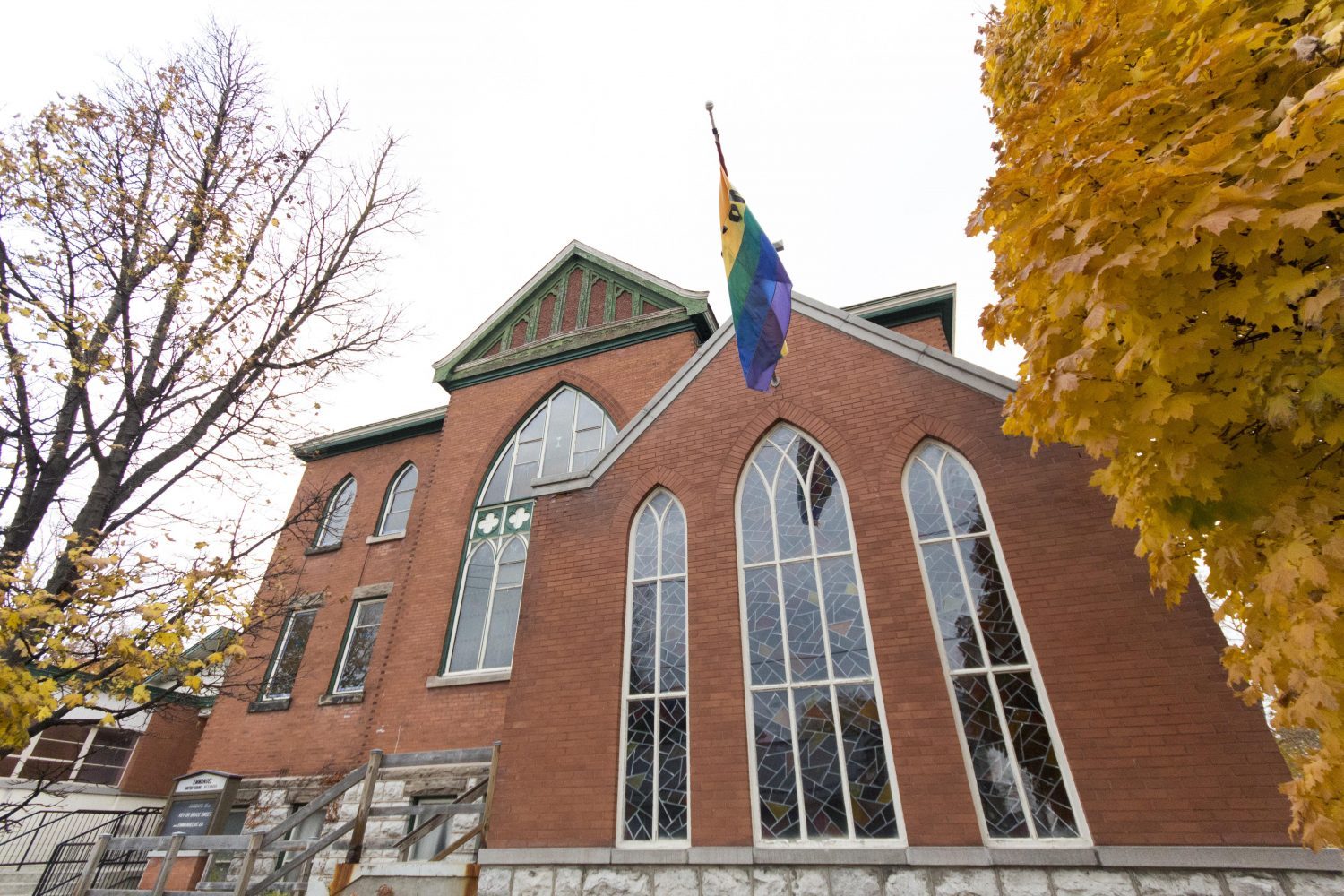Waterloo’s Buddhist Film festival is both an entertaining and enlightening opportunity


Passing by numerous coloured tapestries inscribed with scriptures of the Dharma, eighty or so people amassed together in the hall of the Emmanuel United Church, took their seats with the chime of a traditional Tibetan Singing Bowl and watched stories of faith, trials, healing, teaching and loss.
The 13th Annual Waterloo Buddhist Film festival, put on by the volunteers of the Waterloo Riverview Dharma Centre, is an event that has been growing since its humble origins.
“It first started in one of our volunteer’s home,” said the centre’s administrative coordinator and event organizer, Deborah Crandall, “with thirty or forty people and we’ve been growing ever since.”
Now, nearly twelve years later, the festival still remains dedicated to spotlighting recent examples of Buddhist cinema for the good of the centre and the community.
“What we are hoping to achieve is a visibility in the community at large and gain a wider appeal,” she continued, “we are not just playing to those who practice Buddhism, but people who show an interest in the culture or just want to be entertained. As the masses made their way to their seats and the lights went out, it seemed that she and her team of volunteers achieved this goal.
The first film that was screened was Brian Perkins debut feature Golden Kingdom, a film that holds the distinction to be the first production to be shot in Myanmar by a foreigner after the borders were opened.
Taking full advantage of the gorgeous vistas the country provides, the film centers on a remote monastery of four young monks tasked to survive once their master disappears.
Highlighting the importance of faith and comradery in the face of uncertain times, the film achieves a wonderfully meditative quality with its presentation of strikingly beautiful shots and sequences of slow meticulous cinematography framing this story of young faith under fire.
Golden Kingdom was a presentation of the Burmese teaching of Buddhism and after a lovely catered vegetarian feast of traditional cooking, the festival continued with a change of tone and style with a documentary on a remote school in India. This, according to the event organizers, was part of the film festival’s intent.
“We try and select a broad range of films from different schools of Buddhism or different themes patterned after other film festivals,” continued Crandall, “which helps us to achieve that wider appeal we hope for.”
From a remote monastery of four children to a remote school of eighty, the festival continued into the emotional highlight of the night, with the Emmy winning documentary Tashi and the Monk. Chronicling the challenges of a monk named Lobsang who took it upon himself to found a school, Jhamtse Gatsal, for at-risk children, the film is a beautifully shot, uplifting reminder of the goodness of human nature.
Focusing on the titular Tashi, the film shows how the school’s altruistic teaching methods can reach even the most troubled youth. Even while showing the harrowing decisions that Lobsang must make concerning enrollment, the film exhumes this warm humanity that can make even the hardest hearted individuals crack a smile.
The night concluded with a somber look into the Buddhist’s attitude towards mortality with For the Coyotes. A contemplative look into accepting death, the film presents a father-son relationship brought together after a long estrangement by a cancer diagnosis.
Over the course of several days, the film captures the deterioration of both the father in his condition and their relationship after this strain befalls. Quiet and rife with the teachings of the Dharma in relation to passing, it was a fitting moment to cap off the night.
The 13th Annual Waterloo Buddhist Film Festival was an event for the community, as many like-minded people came together to open themselves up to the teachings of Buddhism made cinematic.
“We put on the event because film can reach a larger number of people,” said Crandall, “and we aren’t just here to educate. We also want to entertain while we inform.”
By presenting stories of juvenile monks, wise teachers and harsh lessons of life, they appeared to hit that balance between enlightenment and entertainment right on its head.


